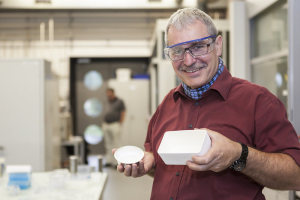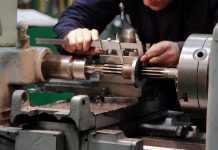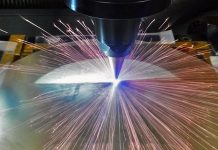 New high performance ceramic-coated aluminum rotors for economic cars that combine lightweighting and affordability. The rotors are being developed in a collaboration between Switzerland’s Empa research institute, Italy’s Politecnico di Torino, Spanish brake manufacturer Fagor Ederlan, Liechtenstein soldering company Listemann AG and the Fiat’s CRF research center.
New high performance ceramic-coated aluminum rotors for economic cars that combine lightweighting and affordability. The rotors are being developed in a collaboration between Switzerland’s Empa research institute, Italy’s Politecnico di Torino, Spanish brake manufacturer Fagor Ederlan, Liechtenstein soldering company Listemann AG and the Fiat’s CRF research center.
While straight-up aluminum rotors would certainly be lighter than iron, they would also be too soft. The ceramic coating provides a durable source of friction, plus it also serves to disperse the heat, which could melt unprotected aluminum. That coating, although only about 2 mm thick, is made up of 15 layers of material. The main ingredient is aluminum oxide, which is relatively strong, abundant and inexpensive. It’s mixed with layers of silicon carbide to increase thermal conductivity, along with a wear-resistant top layer and an adherent bottom layer.
Each of the materials is first combined with water to form a sludge, which is then applied to a piece of synthetic film. Those coated films are then compressed together, and subjected to high heat. As the carrier films are subsequently burned away, the bonded layers of material are left behind to constitute the finished coating.
Because aluminum expands three to four times more than ceramics when exposed to the heat caused by braking, the coating can’t be applied to the rotors all in one continuous piece. If it was, it would crack as the aluminum beneath it expanded. Instead, it’s soldered onto the aluminum in the form of individual tiles laid side-by-side. That way, as the metal expands, the tiny gaps between the tiles can take up the strain by temporarily widening.
Unfortunately, due to aluminum’s low melting point, soldering has to be performed on it at relatively low temperatures. If those temperatures are too low, however, then the solders will fail when temperatures rise while braking. As a result, the project partners are still exploring better methods of affixing the tiles to the rotors. They’re hoping to have a working prototype ready by next April, with a commercial product following sometime over the next few years.
Michigan-based materials company REL is also working on low-cost lightweight brake rotors, made from a ceramic fiber-reinforced metal matrix composite.



